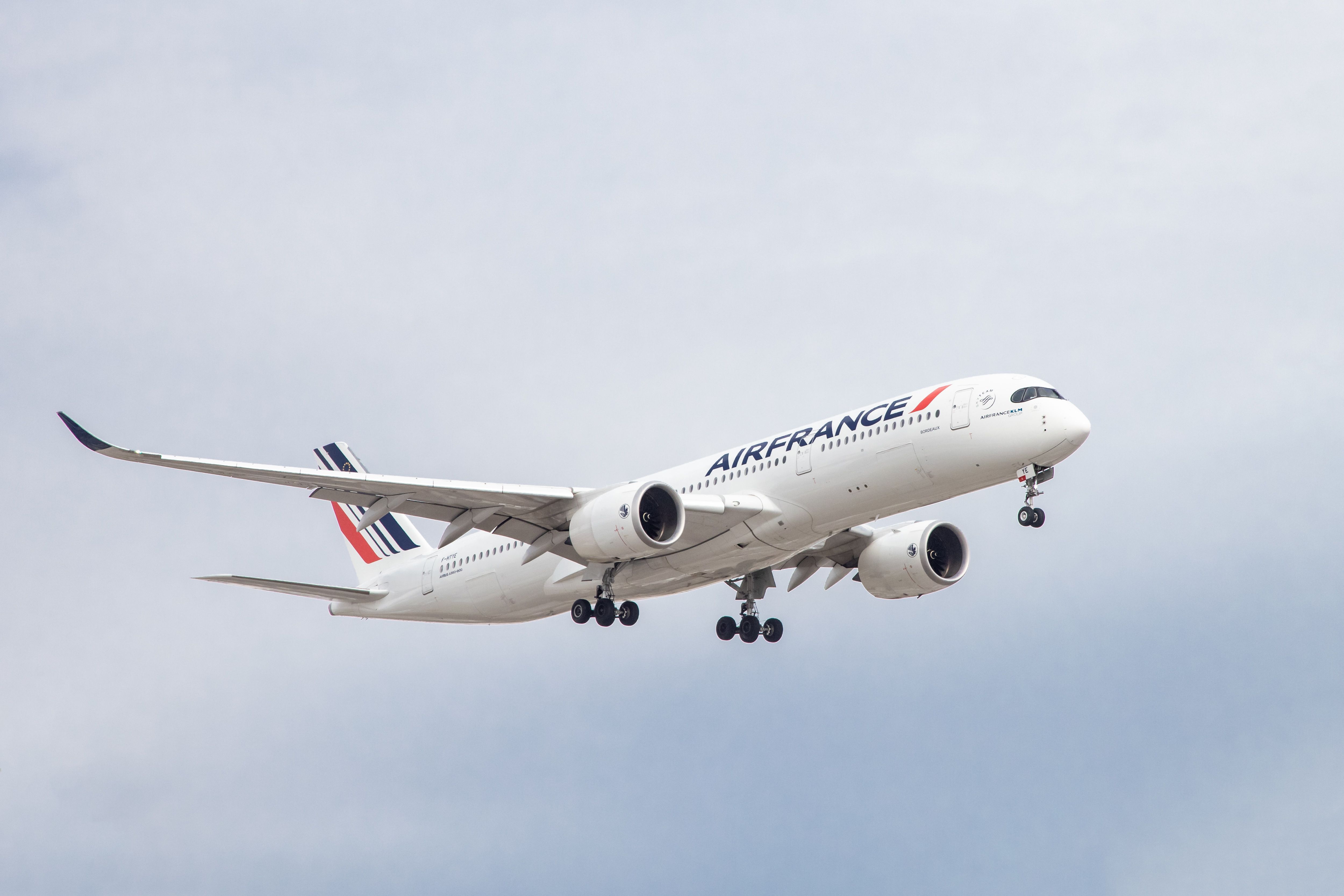Bird Strike Crushes Nose Of Air France Airbus A350 In Osaka
An Air France service between Osaka and Paris was forced to turn back after a bird strike damaged its nose cone earlier today.
AF291 declared an emergency and returned to Osaka Kansai (KIX) less than three hours into its 12-hour journey after the flight deck crew noticed a technical malfunction with the Airbus A350-900's weather radar and speedometer.
Return to Osaka
The one-year-old widebody, registered F-HTYO, departed Osaka at 11:15 JST, bound for Paris' Charles De Gaulle Airport (CDG). Air France's relatively uneventful bird strike and cone damage did not come to the attention of the aircraft's crew until 11:50 JST, while at 35,000 ft just north of Tokyo.
SIMPLEFLYING VIDEO OF THE DAY SCROLL TO CONTINUE WITH CONTENT
As reported by Aviation Safety Network, AF291 chose to turn back to Osaka at around 12:10 JST, declaring an emergency 40 minutes later.
"They suddenly announced that they were going to return, so I didn't know what to expect. It didn't make a particularly loud noise, which was strange," one passenger explained to local media.
AF291 landed safely in Osaka at 14:25 JST, briefly closing the airport's runway 24R for almost an hour to allow for inspection. At least 11 other flights faced minor delays. No injuries were reported among the flight's 324 passengers and crew.
The investigation is currently being handled by The Ministry of Land, Infrastructure, Transport and Tourism, though preliminary reports confirmed a "minor" dent on the nose radome and damaged pitot tubes. F-HYTO remains on the ground at Osaka Kansai, with local news coverage showing the jet undergoing minor maintenance at the terminal.
Air France has been approached for comment.
Bird strike mayhem
With roughly 47 reported per day, according to the Federal Aviation Administration (FAA), bird strikes are widespread in aviation. Typically occurring during take-off and landing, bird rarely strikes cause significant issues to a flight, with crew members thoroughly trained and aircraft structural parts rigorously tested to minimize disruption. Of the small percentage of daily departures affected by bird strikes, 2% to 8% experience "significant damage."
In April, several high-profile incidents happened within a relatively short period, heightening media coverage.
On April 17, a Singapore Airlines Boeing 747-400F en route to Amsterdam (AMS) was forced to reject take off at high speed from Nairobi (NBO) following a bird strike on a right-hand engine, leading to an engine failure. The runway at the airport was briefly closed, with the damaged jumbo jet remaining in Nairobi for maintenance until April 23.
Less than a week later, a United Airlines Embraer E145 and American Airlines Boeing 737 struck a large flock of geese upon take-off hundreds of miles apart. United Airlines UA4294 from Houston (IAH) was able to continue on its short journey to Laredo (LRD), though both engines were damaged in the incident. American Airlines AA1958 from Columbus (CMH) to Phoenix (PHX) swiftly returned to its Ohio airport of origin after flames, and a loud pulsing noise were reported from the aircraft's right engine. The plane landed safely less than half an hour later, with no injuries reported.
What are your thoughts on Air France's handling of the incident? Have you ever experienced a bird strike? Let us know in the comments.
Sources: Aviation Safety Network, Reuters, TBS News Dig, Mainichi Shimbun
Source: Simple Flying


